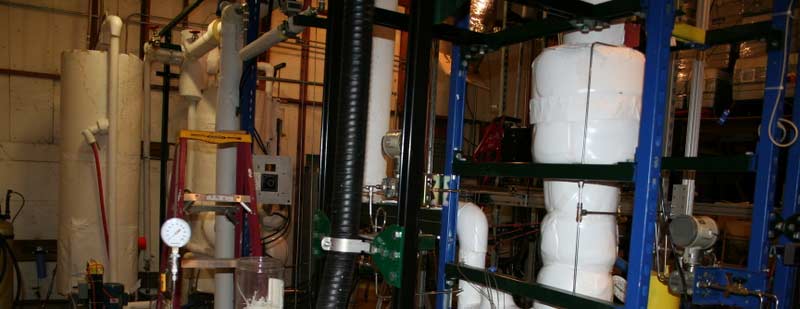
The Nuclear Heat Transfer Systems Lab was established with the initial goals of investigating condensation heat transfer mechanisms, experimentally and analytically investigating new reactor designs and safety systems, and advancing the state-of-the-art in reactor safety analysis. Department of Energy projects and support from Japanese nuclear utilities have been supporting several master's. and doctoral students to perform experimental investigations of passive heat removal systems in advanced light-water reactors and to quantify uncertainties in modeling of Gen IV reactors. These and other projects from the US Nuclear Regulatory Commission and Sandia National Laboratories have enabled the lab to construct thermal hydraulic facilities for testing of advanced safety system concepts, derive theoretical formulations for condensation heat removal in the presence of a non-condensable gas and advance severe accident analysis methodologies. The lab is equipped with a 150-kW steam supply, a high speed camera, extensive thermal hydraulic instrumentation and a state-of-the-art data acquisition system. New efforts focus on developing analysis methods for high-temperature, gas-cooled reactors, improving best estimate analysis with probabilistic risk analysis methodologies and development of detectors for special nuclear materials.
Contact:
Lab Features:
- steam water counter-current flow facility with 150 kW steam generator
- Z-type mirror-based Schlieren system
- air-water counter-current flow facility